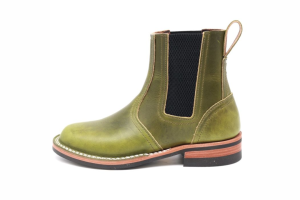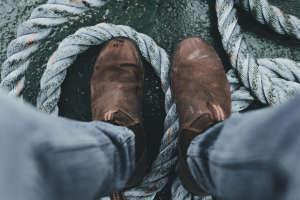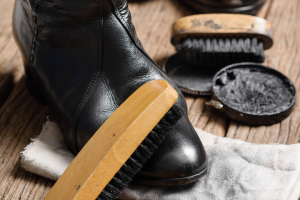What Are The Best Work Boots For Sore Feet? Work Boots That Are Actually Good
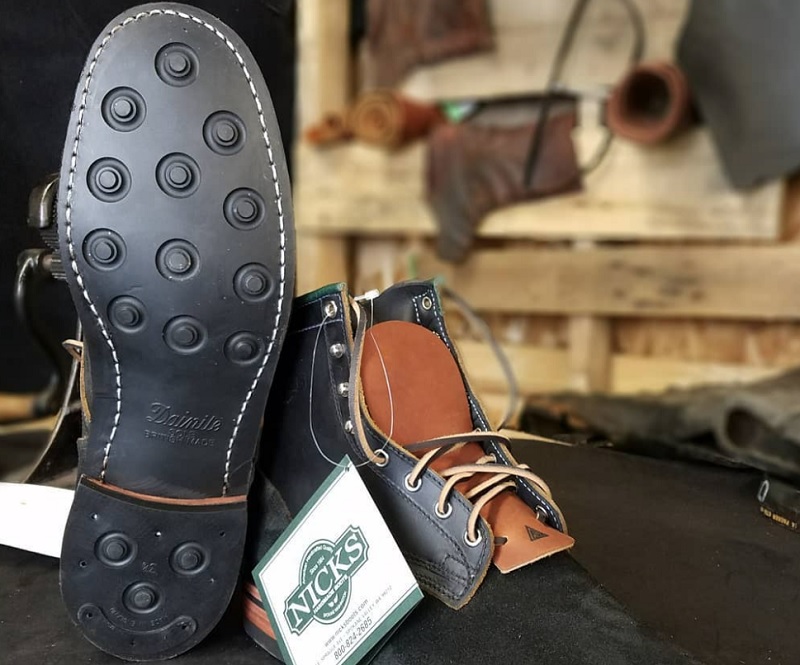
The reason people ask "what are the best work boots for sore feet" is because they aren't wearing a pair of work boots that are made very well. Or at least, aren't made very well for them and their feet.
When it comes to what makes a pair of work boots comfortable, there are certain things that aren't down to personal preference, and these are the aspects in which many boots are lacking. Usually, it's because the manufacturer is cutting certain corners, often to save costs.
However, some things also are down to personal preference with made to order boots. There are certain things that make a pair of boots more comfortable for some people compared to others. That much depends on you and what makes your feet feel better.
So what DOES make a pair of work boots comfortable? What makes for the best boots to keep you from having sore feet? Let's dive into a few things…
Sore Feet Can Be Caused By A Lack Of Shock Absorption
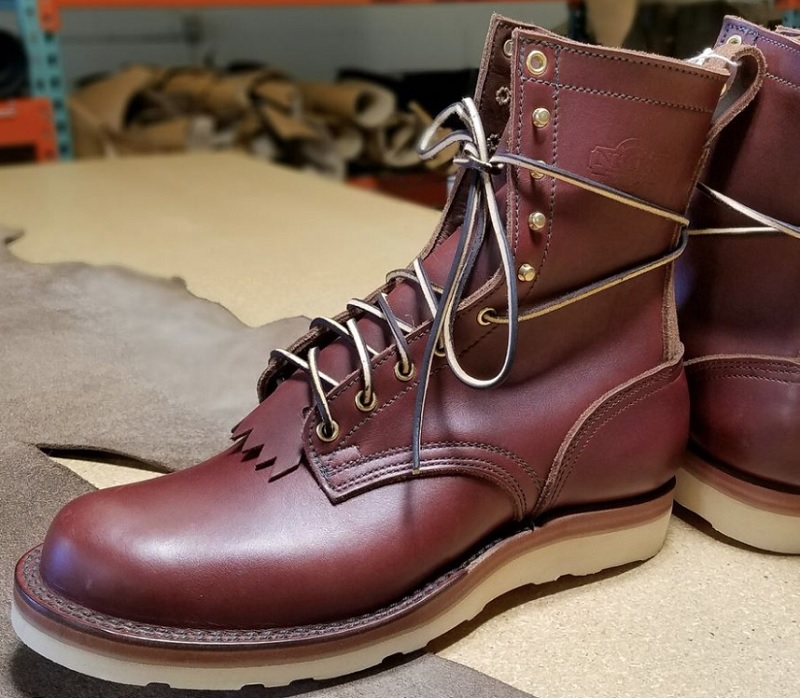
One of the key aspects to any work boot is the ability to absorb impacts. Inadequate shock absorption will definitely give you sore feet over the course of a work day, especially if you work on concrete or asphalt, or in rough terrain.
The lack of shock absorption makes itself evident in almost all cases in foot pain in the heel and the midfoot.
What's happening is that the force of the boot striking the surface of wherever you're at is being transmitted directly into the heel. A good work boot design will dissipate the impact, much like how a shock absorber keeps you from feeling every little bump in the road.
What gives a boot the ability to absorb shock? Typically it's too little material in key areas, especially the heel and in the shank of the boot.
In a natural stride, your heel and arch tend to take the brunt of impact with the ground as the foot rolls forward, with the ball of the foot propelling you forward. So, when you wear a pair of boots, those are the areas that need the most reinforcement.
The shank of many work boots is typically a flimsy piece of material, such as a single layer of poor quality leather, or perhaps a thin piece of fiberglass.
The heel of a work boot should include a material that has a bit of give to it, but not too much, in order to absorb shock. Rubber, hard leather or some types of wood can be suitable heel block inserts, depending on boot design.
A heel that has too much give or too little transmits the shock of footfall directly into the heel, causing bruising and can eventually cause injuries such as hairline fractures.
So, a boot has to be made to absorb shock.
A Boot Should Have Adequate Arch Support, Whatever That May Be For You
The amount of arch support a boot should have to be comfortable depends on you and your individual feet, but there must be some arch support in order for any footwear to be comfortable.
The arch is the spring of the foot, the point that flexes and shifts the load of the body from the heel to the ball of the foot and helps create the spring that powers bipedal motion.
For footwear to allow your feet to function as they should, there either needs to be structural support or a totally flat-bottomed shoe, with no in-between. In other words, you need to be almost barefoot, wearing something like slip-on water shoes, or boots with good arch support.
Boots or shoes that are in between those two are what give people problems. Boot and shoe makers tend to make footwear that doesn't have enough arch support, because the design and materials take longer to get the product to market and cost more.
In other words, many shoe and boot makers give you inadequate arch support because they feel what they do build into their products is "good enough," which - as always - is the enemy of greatness, even for a casual work boot.
Arch support means a footbed that is designed to cradle the heel and adhere to the arch, providing reinforcement the entire time your foot is in the boot. Mediocre arch support allows your foot to move up and down inside the boot or shoe, never fully supporting it.
It's also the case that many boots and shoes on the market are supplied with flat, flimsy and grossly inadequate inserts...which is why so many people wind up having to purchase Spenco and other insoles that actually do have good arch support.
Now, the exact amount of arch support...depends on you and your feet. Some people need more arch support than others. People with high arches need a lower arch structure to let the foot flex into a flatter shape, those with low arches need more support in the arch of the foot.
Those in the middle need arch support in the middle.
In boots and shoes, arch support comes from the heel drop - the taller the heel compared to the ball of the foot, the more the arch tends to be supported - as well as the structure of the shank and the footbed.
Boots of good manufacture will have generous reinforcement under the heel and arch of the foot, giving your feet the support they need...and bad boots or shoes will not.
Good Insoles Make A Difference, But Breaking In Boots Makes The Difference

Another aspect of comfort is the insoles...but bear in mind that insoles may not become comfortable right away, as breaking in your work boots may take some time.
During the initial period of ownership, the footbed of your boots has to be molded to the shape of your feet. That takes time, and not only that, will take longer if you purchase a quality pair of boots that are built correctly.
Soft footbeds feel comfortable initially...but break down more quickly, resulting in a boot that stops being comfortable with time, possibly even a matter of a couple of months, depending on which ones you buy.
A footbed that's made to have structural integrity, however...is going to feel stiff at first, especially with quality leather insoles, inserts or not. They'll mold to your feet with use...but not overnight!
Once they do, however, a pair of heavy work boots can feel as comfortable as your favorite pair of slippers.
Granted, a good set of inserts will also help. You want a good blend of cushioning but also enough support to cushion the feet from impacts. A great set of inserts will also help keep the break-in period more bearable.
You will have to replace inserts periodically, of course, and this is another aspect of comfort that sometimes goes unnoticed. Inserts are compressed between the footbed and the foot, and eventually they will lose structural integrity and need replacing.
Make sure you're replacing your insoles periodically. If you notice your feet are starting to hurt when they didn't use to, that's usually a good sign that it's time to.
Get a pair of work boots with a good footbed, and paired with a good set of inserts...and that will make a huge difference.

